Reflections in water

This exercise has a classification “easy” even though most people may perceive it as a fairly advanced exercise. But the approach and the different color layers are quite easy to do, so I call the exercise simple.
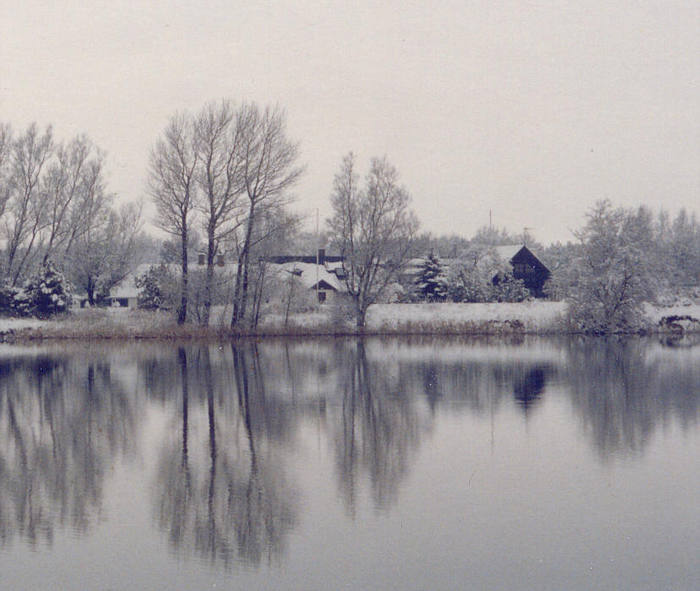
The colors are a blue and a brown, my choice is phthalo blue (RS) and burnt umber, you can use others if you want, but preferably avoid granulating colors. The colors must have the ability to float easily in the water. With only these colors, it means that all colors in the painting used are mixed with another color, nowhere in the picture can any unmixed color be used.
Step 1
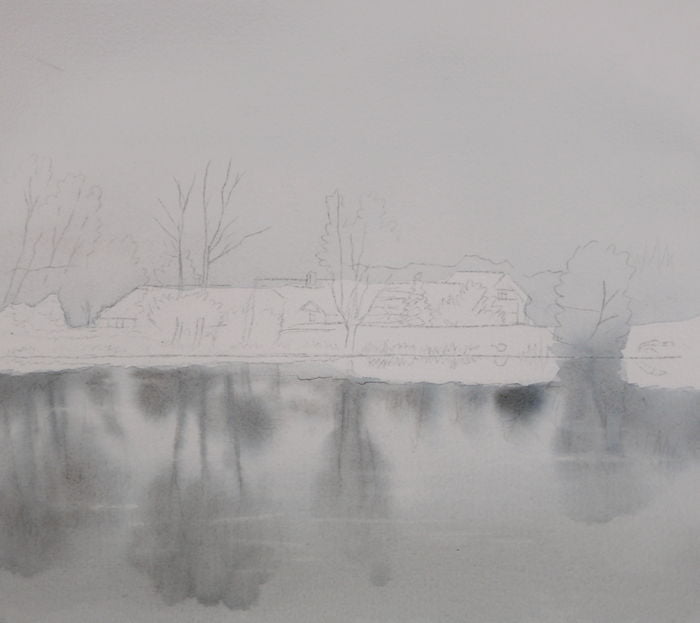
You should start by painting a sky, it is painted flat down to the horizon and around the houses, paint over what will later become trees. The color is a mixture of blue and brown. There should be quite a lot of water in the mixture, it should not be dark.
When this is done, you should paint the water, it is a little harder. Three different steps are included in the water surface. Before you start painting, mix two different colors: a light gray and a darker gray color, still with only blue and brown colors. The light gray should be similar to the color of the sky, use leftover color if you have one after the sky is painted, the other color should be significantly darker, it should be used for dark areas for trees and shrubs that are reflected in the water.
- Paint the whole water with the light gray color, it should be very wet. Immediately, while while the color is still really wet, put in your darker gray at the bottom of the water so that a smooth transition between light gray and a darker gray occurs.
- Then add color to the reflections of the trees and shrubs with your dark gray color. The surface should still be wet.
- Before water has dried (it works best when the paint is almost dry but not completely) soak up some horizontal light lines with a slightly damp brush. NOTE: you should not add water to the paper, then it will bloom, you should remove paint with the brush. For it to work, the brush must be drier than the paper. (The observant person then says: but these lighter lines are not in the photo, that’s right! But you create the illusion of a still water surface, so why not.)
Step 2
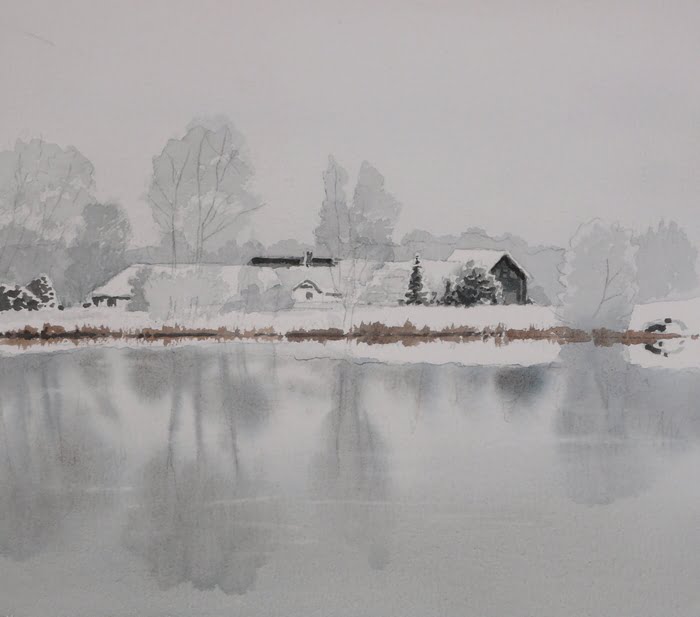
Continue with a gray color and paint the contours of tree crowns, not too heavily. Behind the houses and the larger trees. Also paint parts of the houses and are not snow-covered (which should be white). Try to paint evergreen trees a little “spotted”, it gives the impression of snow. Some grass at the water’s edge should also be painted, keep in mind that half the grass is above the water and half is a reflection in the water.
Step 3

Now you are going to paint all the trunks and tree branches, it is a bit tricky but it must be done. Use a small brush with a fine tip or a dip pen for this. All vegetation gets better if it is painted in the same direction as it grows, which means that a tree trunk should be painted from the root and upwards, never the other way around. All branches are painted from the trunk and outwards. If you are right-handed, it is difficult to paint that way for all branches on the left side of the trees, in which case turn the paper over and paint them with the paper upside down.
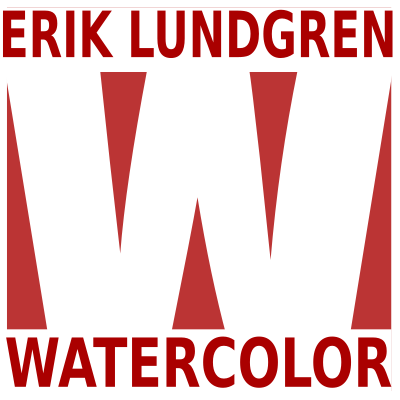

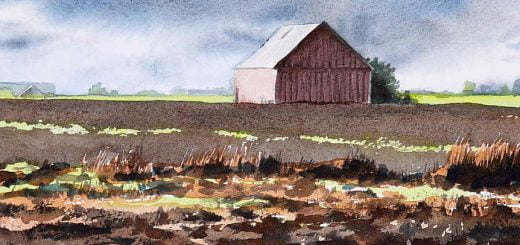
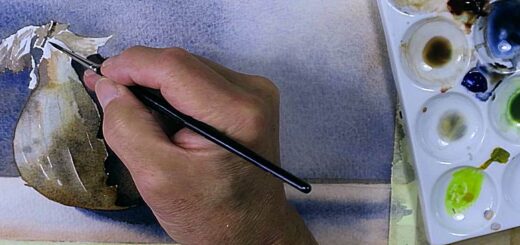










This is an excellent exercise.